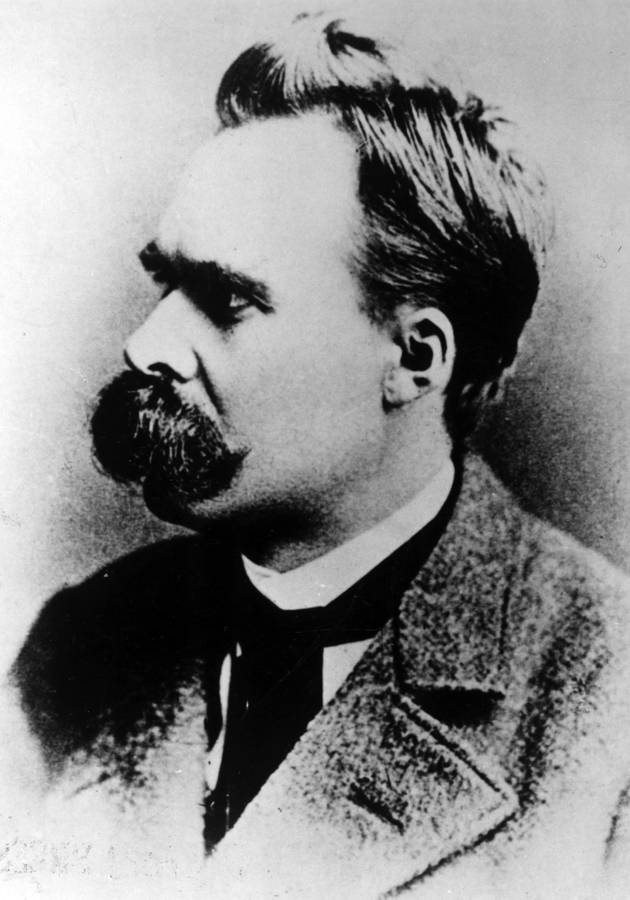In the words of its author, Canadian trader Andrew Aziz, “How to Day Trade for a Living” explains “the fundamentals of day trading and how day trading is different from other styles of trading and investing.” Translation: if you are a beginner trader interested in day training, you’ve come to the right starting point. Get ready to discover what day trading is, how it works, and even how to best manage your risks and account!
What day trading is
Wikipedia defines day trading – quite cumbersomely, we might add – as “a form of speculation in securities in which a trader buys and sells a financial instrument within the same trading day, such that all positions are closed before the market closes for the trading day to avoid unmanageable risks and negative price gaps between one day’s close and the next day’s price at the open.” As lengthy as this definition is, it still omits the most important part – namely, the fact that day trading isn’t a strategy to get rich quickly, but a profession, much like medicine, law and engineering. This is Aziz’s first rule of day trading and the most important lesson you should learn from reading this book.
Statistically speaking, Aziz warns, 90% of people who start day trading fail and lose their money. Put otherwise, day trading is extremely difficult as it pits the sharpest minds in the world against each other in a win-lose game called the market. Consequently, the main objective of day trading isn’t to buy a stock low at 10 AM and sell it high at 2 PM. It is to outsmart other traders while they are trying to outsmart you. “The only reason there is money in the market is that other traders have put it there,” explains Aziz. “The money you desire to win belongs to other traders and they have no intention of giving it to you. That is why trading is such a hard business.”
That is Aziz’s second rule of day trading: if you want to succeed as a day trader, you must treat day trading as a serious business. Amateur traders lose money because they treat it the same way they would gambling or the lottery – as a get-rich-quick scheme or, even worse, an adrenaline-filled hobby. Good traders, on the other hand, treat day trading as a business. Consequently, they dedicate countless hours “reading about trading styles, observing how experienced traders are trading, and practicing in simulator accounts to learn how to trade with real money.” Even more importantly, they never start trading before obtaining the following six basic tools, all of them critical for succeeding in the day trading business:
- Enough capital (money) to trade with (at least $5,000 if outside of the USA and $25,000 if a resident of the United States).
- High-speed internet service.
- The best available broker.
- A fast order execution platform that supports hotkeys.
- A scanner for finding the right stocks to trade.
- A community of traders.
How day trading works (1): swinging, longing and shorting
As we already mentioned, day trading refers to the act of buying and selling a financial instrument within a single trading day. In this, it is very different from swing trading, wherein you hold stocks over a period of time, generally between one day and a few weeks. Day traders, however, always close their positions before the market closes, no exceptions. That’s the essence of Aziz’s third rule of day trading, which he formulates as follows: “Day traders do not hold positions overnight. If necessary, you must sell with a loss to make sure you do not hold onto any stock overnight.”
Even though it entails a lot of risk, day trading can also be quite liberating. Namely, whereas swing traders must look for stocks in solid companies that won’t lose their entire value overnight, day traders can trade absolutely anything, even companies that might go bankrupt tomorrow for the simple reason that they don’t care what might happen to a stock after the market closes. What interests a day trader the most is whether a stock will move during the ongoing day, not whether it has intrinsic value or if it belongs to a stable company. In fact, day traders stay away from stable stocks and flat markets. What they are looking for are volatile stocks that move in a relatively predictable manner.
When day traders buy stocks in the hope that they might sell them later at a higher price, they long them. Going long is the best strategy when the market is going high. However, day traders can also profit from the market going low and the prices dropping. In this case, day traders borrow shares from their broker and promise to return them at the end of the day. Hoping that the price of these stocks will go down, day traders next sell the borrowed stocks at the stock exchange. If they are right in their predictions, they can buy them back cheaper at a later hour, thus making a profit. This is called shorting and is even more interesting than buying long, because stock prices drop much more quickly than they go up. That’s because – as Aziz aptly remarks – fear is a much more primal and important feeling than greed. There are caveats, of course. That’s where we’re heading next.
How day trading works (2): retail vs. institutional traders
Shorting isn’t just a more promising day trading strategy than long selling – it is also a much more dangerous one. Consequently, some day traders suggest that beginners should only buy stocks in the hope of selling them higher. That way, they argue, day traders can limit their potential losses to the price of the stock. And indeed, you must be far more careful when shorting because losses aren’t limited in that case. If, for example, you long a stock of a company for $5 and the company suddenly goes bankrupt, you’ll lose $5 and that’s it. If, on the other hand, you short that same stock but its price starts rising, there’s no limit to how high it can go. Hence, not only can you lose the money you’ve spent buying the stock, you can also lose all the money in your account, and you can even end up owing your broker!
Now, most day traders are retail traders, that is to say, individual investors who invest only for themselves and are not in charge of other people’s money. Institutional traders, on the other hand, are large entities, such as mutual or hedge-funds or Wall Street investment banks. Unlike individual traders who use their own minds and knowhow to long or short stocks, institutional traders use sophisticated computer algorithms to transact a large number of orders in a fraction of a second. This is called high frequency trading – or HFT, for short – and comprises about 70% of market volume. In other words, contrary to what you see in the movies, retail traders comprise only a small percentage of the volume in the market.
The difference between retail and institutional traders is the same as the difference between guerilla warriors and national armies – the former have a chance against the latter only if they stick together and wait for an opportunity to quickly move out of their hideouts. It’s extremely important to stay away from stocks that are heavily traded by institutional traders. That’s because only institutional traders, thanks to computer algorithms and HFT, can profit from small movements of price. As a day trader, you must stick to stocks other retail traders are trading. “The strength of retail day trading strategies is that other retail traders are also using them,” explains Aziz. “The more traders using these strategies, the better they will work. The more buyers, the quicker the stock will move.”
Risk and account management
Most people assume that the main job of a day trader is to buy stocks low and sell them high but that’s not the case. The main job of a day trader is actually to manage their risk and their account. That’s pretty much the essence of Aziz’s next rule to trade by. “Success in day trading,” he writes, “comes from risk management – finding low-risk entries with a high potential reward.” Aziz’s minimum win:lose ratio is 2:1. His risk management strategy is as follows.
First of all, he asks himself if he is trading the right stock. As a rule, he always avoids four kinds of stocks: 1) those that are heavily traded by computers and institutional traders; 2) those that have small relative trading volume; 3) those that can be considered highly manipulated penny stocks, and 4) those that don’t have any reason to move, that is to say, those that don’t have a fundamental catalyst. A fundamental catalyst can be anything from earnings reports to impending FDA approvals or disapprovals, from mergers and acquisitions to expected major contract wins or losses. Stocks that move because of properly identified fundamental catalysts are the dream of every day trader.
The second question Aziz asks himself is what share size he should take. This, of course, depends on the trader’s account size, but it also depends on their daily target. Namely, since in day trading losing money is far easier than earning it, you must have a daily profit goal after which you must stop trading regardless of how you might feel. If your daily target is $500 and you hold about $25,000 in your trading account, then you can pick about 800 shares to trade each day. At least that’s what Aziz does.
The final question he asks himself concerns his stop loss. “The absolute maximum a trader should risk on any trade is 2% of his or her account equity,” he warns. In other words, if you have a $25,000 account, you must avoid risking more than $500 per trade. Don’t forget that this is the upper limit. Nobody stops you from acting conservatively and risking only half of the stop loss per share, or about $250. In fact, that should be your preferred strategy.
Speaking of preferred strategies, the best time to trade is between 9:30 a.m. until around 11:30 a.m. New York time (that is between 1:30 p.m. and 3:30 p.m. Greenwich meantime). This is because that’s when the market opens and when it is the most volatile. That means you should start your workday at least one hour before 9:30 a.m. New York time and spend the first hour scanning the market to see which stocks are gapping up or gapping down. Then, start scouring the news for catalysts that might explain the gaps. Start buying stocks only once you’ve discovered the catalysts. Otherwise, you are merely gambling.
Final notes
Deliberately short and concise, “How to Day Trade for a Living” is a smart, practical guide to day trading. According to David Rayome, professor of finance at Northern Michigan University, it is also something more – “the best starting point to learn about trading stocks.” This is, really, not an exaggeration: Aziz’s book is indeed quite comprehensive and comprehensible, at the same time as it is unassuming and unpretentious. Highly recommended for novice traders.
12min tip
If you want to become a day trader, never forget the first two rules of day trading: it is not a strategy to get rich quickly and it is not an easy job. So, it should be treated as a serious business.





























